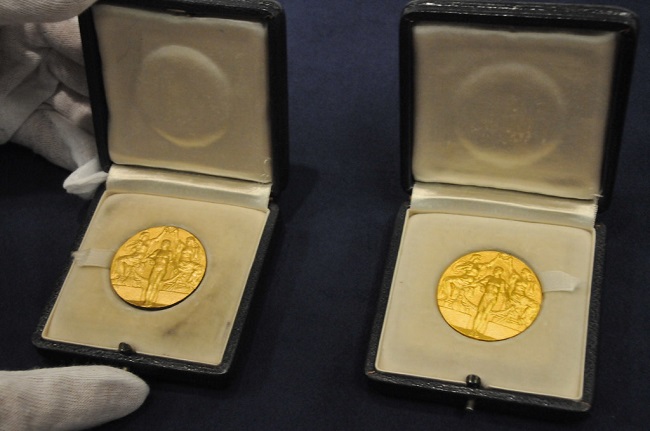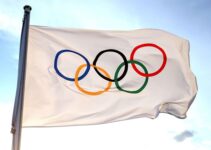Medals awarded to Olympians are also up for grabs, including a scarce gold medal from the 1956 Winter Olympics in Cortina, Italy, a silver medal from the 1960 Summer Olympics in Rome, a bronze medal from the 1912 Summer Olympics in Stockholm, and a silvered bronze medal from the 1900 Summer Olympics in Paris.
The auction house claims that it will only reveal the name of the winner and the sport for which the medal was awarded to the highest bidder unless otherwise stated in the lot description.

1912 Olympic Gold Medal For Sale
1956 Cortina
As the fifth host of the Winter Olympics, the Italian town of Cortina d’ Ampezzo (or just Cortina) was a fantastic choice. A lack of athletes and officials led to the games being called off. In 1956, the Winter Olympics returned to Cortina.
There are a total of 51 different medals, each made of.800 fine silver and measuring 60 millimetres in diameter, that are given to the winners of the various sports.
The obverse of the medal depicts the winged figure of Victory, crowned with the Olympic rings, holding a torch at her right, and the inscription VII GIOCHI OLIMPICI INVERNALI. The obverse has a scene of Mt. Pomagagnon covered in ice crystals, and the reverse features the inscription Citius Altius Fortius.
Designed by Constantino Affer, an Italian medalist based in Milan, and struck by Lorioli Bros., the medal is valued at about $10,000.
It wasn’t until the 1956 Winter Olympics in Cortina that Soviet Union competitors finally made it to an Olympic competition.
1960 Rome
Soviet sprint canoeist Aleksandr Silayev was awarded the silver medal for placing second at the 1960 Summer Olympics in Rome. The medal is estimated to be worth $6,000 or more.
Italian painter and sculptor Giuseppe Cassioli created the 68-millimeter medal with a bronze laurel wreath bezel.
On the reverse side of each medal is the engraved words GIOCHI DELLA XVII OLIMPIADE, ROMA MCMLX, and an image of Victory holding a laurel wreath and palm branch while perched high above the Coliseum. The stadium may be seen in the background of the reverse design, which depicts a victorious athlete carrying a palm branch and being carried by other athletes.
On a tablet embedded in the obverse bezel, just below the design, is the Italian sport’s name CANOA.
1812 Stockholm
There is up for grabs a bronze medal for placing third at the 1912 Summer Olympics in Stockholm, complete with its original presentation case. A value of $5,000 or more has been placed on the medal.
Bertram Mackennal depicted a winning athlete holding a palm branch and receiving a laurel wreath from two seated women on the medal’s obverse. On the other side, a herald announces the commencement of the Olympic Games while a bust of Ling, the creator of Swedish gymnastics, stands in the background;
the work was created by Swedish sculptor and engraver Erik Lindberg and is surrounded by the inscription OLYMPISKA SPELEN I STOCKHOLM.
The medals awarded at the 1908 Summer Olympics in London first used Mackennel’s design.
1900 Paris
A silvered bronze medal measuring 40 mm by 58 mm is up for grabs here, the prize for a gold medal performance at the 1900 Summer Olympics in Paris. Frédéric-Charles Victor de Vernon, a French artist and engraver based in Paris, was responsible for the medal’s design.
The obverse of the medal shows a winged goddess showering laurels over the Exposition grounds, and is engraved REPUBLIQUE FRANAISE, EXPOSITION UNIVERSELL, PARIS 1900.
Image of a winning athlete on a podium in front of a stadium and the Acropolis appears on the reverse, along with the words “physical exercise and sports,” EXERCICES PHYSIQUES ET SPORT.
There is an incuse Bronze stamp down one side of the medal. The value of the medal is over $1,000.


